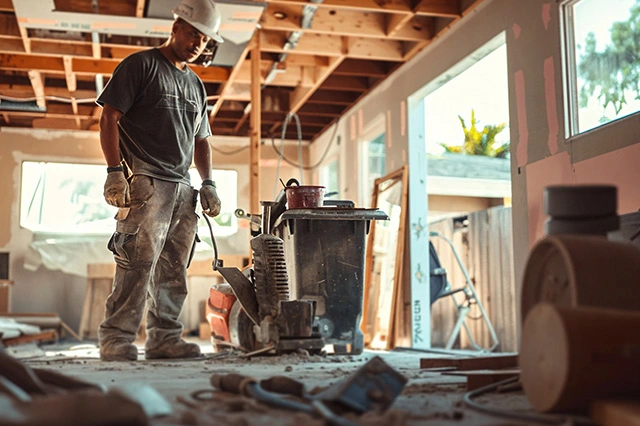The Rise of HMO Properties in the UK and the Importance of HMO Property Insurance
In the United Kingdom, the housing market has seen a significant rise in the popularity of Houses in Multiple Occupation (HMOs).
This trend reflects changes in housing needs, economic pressures, and evolving preferences among renters and investors alike. Additionally, landlords must obtain an HMO licence if the property meets certain criteria, such as the number of tenants and their household status. Understanding what HMOs are, why they are becoming more prevalent, and their implications for both landlords and tenants is crucial for anyone navigating the UK property market.
What is a HMO?
A House in Multiple Occupation (HMO) is a type of rental property that is shared by three or more tenants who are not part of the same household (i.e., they are not family members). Each tenant typically has their own private bedroom but shares common areas like the kitchen, bathroom, and living room.
HMOs are regulated by specific rules that address safety, health, and welfare standards, differentiating them from other types of rental accommodations. Given these specific regulations, landlords must ensure they have an appropriate HMO insurance policy that covers all necessary aspects, including property owners’ liability and building risks.
The Average Cost of Renting a Room in an HMO
The cost of renting a room in an HMO varies widely across the UK, depending largely on location.
For instance, rental costs in major cities like London, Manchester, and Birmingham are typically higher than in smaller cities or rural areas.
On average, renters can expect to pay anywhere from £350 to £550 per month for a room in an HMO outside of London, with prices in the capital averaging between £500 and £800 per month. These costs often include utilities and council tax, which can make HMOs a cost-effective option for many tenants.
Benefits to HMO Landlords
For landlords, HMOs offer several attractive benefits, making them a popular investment choice:
- Higher Rental Yields: By renting out individual rooms rather than a whole property to a single tenant or family, landlords can generate a higher total rent. This can significantly improve the yield from the property. Landlords that have a consisting of HMO’s will see greatly increased rentals.
- Risk Diversification: With multiple tenants, the financial risk is spread out. If one tenant leaves or cannot pay rent, the impact is less severe compared to a single-tenancy property.
- Demand Consistency: There is a steady demand for affordable, flexible housing, particularly in urban areas and university towns where young professionals and students are likely to seek short-term, cost-effective housing solutions.
However, landlords must ensure they have obtained the necessary HMO licence to legally rent out the property.
Why the UK Is Seeing More HMOs
The increasing emergence of HMOs in the UK can be attributed to several factors:
- Housing Affordability Issues: With rising property prices and stagnant wage growth, many individuals find it challenging to afford their own home or rent an entire property. HMOs offer a more affordable solution for many, especially in expensive urban areas.
- Changing Demographics: There is a growing population of students, young professionals, and international workers who prefer flexible and less costly living arrangements. HMOs cater perfectly to this demographic.
- Legislative Support: Changes in UK housing laws and regulations have made it easier for landlords to convert properties into HMOs. These regulatory frameworks ensure that safety standards are met while encouraging the development of HMOs to meet housing demands. Obtaining an HMO licence is a crucial step in this process, ensuring that properties meet the required standards for safety and habitability.
HMO Landlord Responsibilities
As an HMO landlord, you have a range of responsibilities to ensure the safety and well-being of your tenants. These include:
- Ensuring Safety Standards: Your property must meet stringent safety standards, including fire safety and electrical safety. This involves installing smoke alarms, fire extinguishers, and ensuring all electrical installations are safe and regularly inspected.
- Timely Maintenance and Repairs: Regular maintenance is crucial. You must address any repair issues promptly to prevent hazards and ensure the property remains in good condition.
- Providing Adequate Facilities: Ensure that the property has sufficient kitchen and bathroom facilities for the number of tenants. These areas should be clean, functional, and well-maintained.
- Hazard Management: The property should be free from hazards such as asbestos and legionella. Regular risk assessments and appropriate measures are necessary to mitigate these risks.
- Clear Tenancy Agreements: Provide tenants with a written tenancy agreement that clearly outlines their rights and responsibilities. This helps prevent misunderstandings and disputes.
- Record Keeping: Maintain detailed records of all maintenance and repairs, including dates and specifics of the work carried out. This documentation is essential for compliance and can be useful in case of disputes.
- Legal Compliance: Adhere to all relevant laws and regulations, including the Housing Act 2004 and the Health and Safety at Work etc. Act 1974. Compliance ensures the safety of your tenants and protects you from legal issues.
HMO landlords have a higher level of responsibility than standard landlords due to the shared facilities and increased risk of accidents and injuries. By fulfilling these responsibilities, you can provide a safe and comfortable living environment for your tenants.







